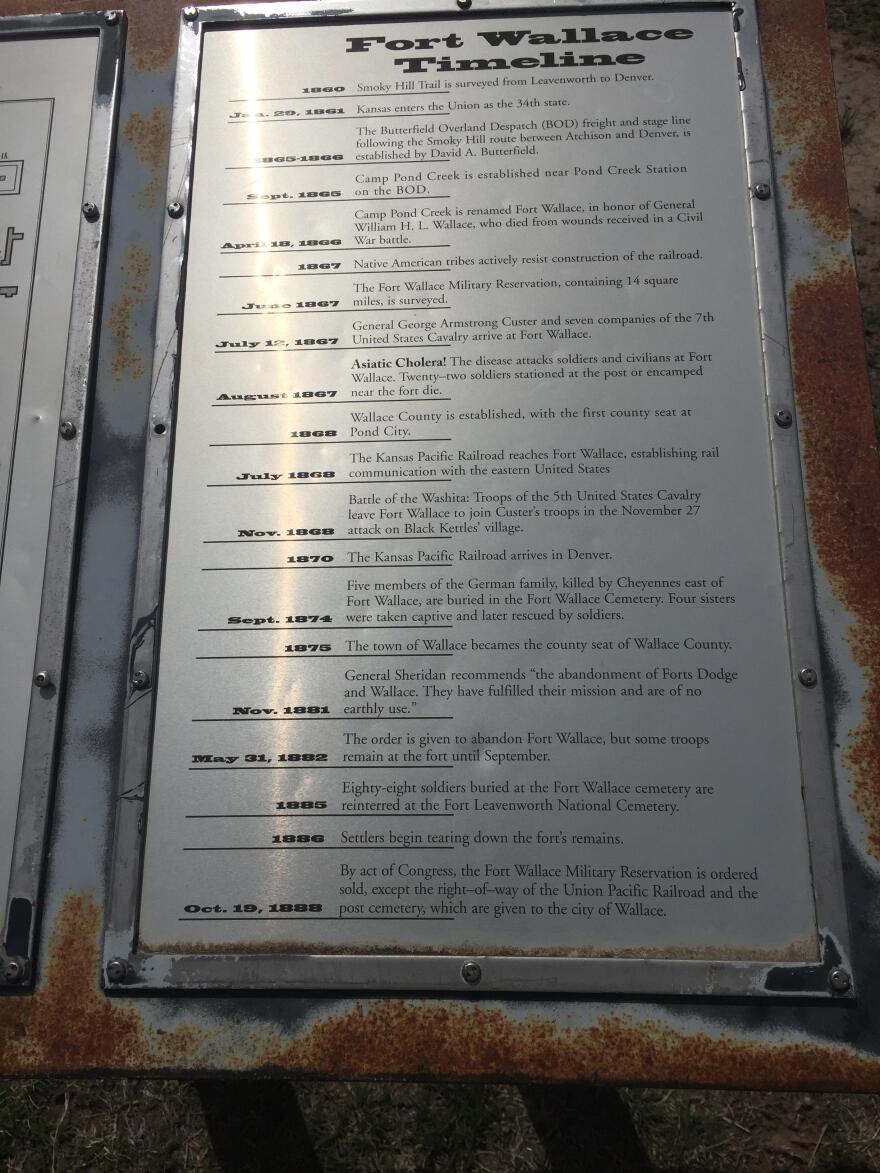WALLACE, Kansas — Some people call it the middle of nowhere.
On the High Plains of Kansas, where antelope far outnumber residents and the land stretches across the horizon, the Fort Wallace Museum is in the process of telling a story.
In fact, many stories.
"You've got to look beyond the shopping malls and the Pizza Huts to find the Great American Story," said Jayne Humphrey Pearce, president of the Fort Wallace Memorial Association near the Kansas-Colorado border. "And we are smack dab in the middle of it.
"Here on the Plains, we are part of the story of going west and the clash of cultures."

The museum is indeed a plethora of stories of the American West – of legendary names such as George Armstrong Custer, Southern Cheyenne Chief Roman Nose and Buffalo Bill Cody.
More than a 150 years ago, some of the most violent clashes of cultures took place here as Native Americans fought to keep their way of life, soldiers obeyed orders and pioneer families were sometimes caught in the middle.
Fort Wallace soldiers bore most of the brunt of the Indian warfare in Kansas and eastern Colorado.
It is the story of rural Kansas – of droughts, windstorms, blizzards, failed crops and blistering hot summers.
And then, there are the people who still populate the region, many of them with pioneer and Native American ancestries.
Wallace County has about 1,500 residents and nearly half of them live in Sharon Springs, the county seat. It's the least populated of the state's 105 counties.
"And so, people say, 'What's out here?' " Humphrey Pearce said. "And what's out here is a story. Many stories -- all woven together. It is incredibly rich and endlessly fascinating."
There is the American story of transportation – of horses, stagecoaches, railroads and, finally, interstate highways.
"You are talking about an ancient Indian trading trail … that becomes the shortest distance between Leavenworth and Denver and, in 1865, leads almost immediately to the establishment of Butterfield's Overland Dispatch," Humphrey Pearce said of the famous stagecoach line. "And then … the Kansas Pacific Railway that follows that same route along the Smoky Hill trail. And I-70 and (U.S.) 40 are also following that same route."
This is an area of Kansas that attracts commerce, which brings people like Buffalo Bill Cody and Wild Bill Hickock.
"You have Fred Harvey, who had his very first restaurant here in Wallace before he went to the Santa Fe and established his standards," Humphrey Pearce said. "You have Mary Berry, who was a woman manager for Fred Harvey at a time when that was a little bit unusual, and then her children had Calamity Jane sleep in their bedroom … when she stopped along the railroad on what was some of her famous travels."
It is the stories of the Apache, the Southern Cheyenne, Northern Cheyenne, Comanche, Arapaho, Kiowa, Sioux, Pawnee and Plains Apache found on a mural in the museum.
"These are the names of the tribes in their own languages," Humphrey Pearce said. "As we are looking at it, it looks like these names are floating on the wind here in a Kansas sunset because those voices still speak."

But the stories here go back further, as far as 87 million years to the Cretaceous period when much of Kansas was covered by a vast ocean. The museum's exhibits include a cast of a 40-foot plesiosaur, excavated in 1867.
Rich and vast, the stories are both personal and universal. The middle of nowhere is now suddenly everywhere in our daily lives.
Humphrey Pearce is not a longtime Kansan in the way small-town Kansans sometimes measure outsiders. She grew up on the beaches of North Carolina and married into a Wallace County ranching family when she met her future husband in the Singing Sergeants, the official chorus of the United States Air Force.

She has since become an active force in helping tell the stories of Fort Wallace. Humphrey Pearce's favorite artifact is a tiny baby's gold ring that is part of the museum's Floris and Viola Weiser collection, a massive display of arrowheads.
"It actually belonged to a white woman who had been held captive by Cut Nose's band," she said. "When Floris found that baby's gold ring, he knew exactly whose it was and when they had camped there."
The stories may be Old West in origin, but they are finding new interest and popularity on one more modern-day trail: the internet.
"We recognize we are in the middle of everywhere – which the middle of everywhere can be a little tough to get to," Humphrey Pearce said. "So we do try to share the story as widely as possible – through film, lectures that are broadcast on Facebook, through our newsletter and all kinds of social media.
"We try to tell that story."





